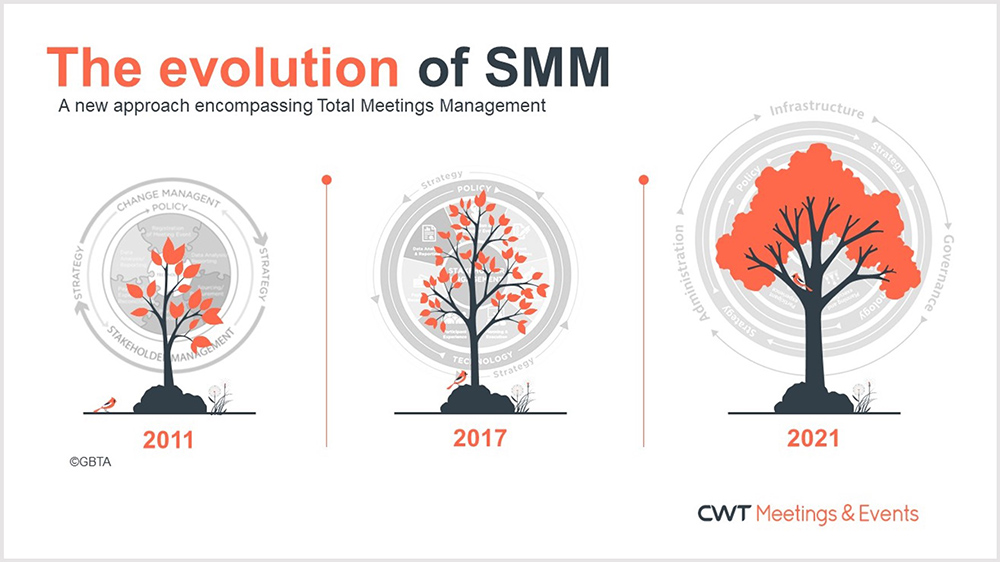
The recent pandemic highlighted the priority and importance of effective risk management in meetings and events. As the pandemic unfolded and lockdowns and travel restrictions were imposed, organizations scrambled to figure out what meetings their employees had booked, who was organizing them, and the financial impact of cancellations. Meetings, events and travel are returning and CWT is revolutionizing the approach to a managed meetings program strategy, demonstrating that NOW is the time to fortify their M&E programs for present and future risk.
Strategic Meetings Management (SMM), a disciplined approach to managing meetings and events across an organization, is considered a highly effective way to manage risks associated with meetings and events and develop an effective meeting and event strategy that will lay out other key benefits. The Global Business Travel Association's (GBTA) Meetings & Events Committee developed the first SMM ‘wheel’ back in 2003, identifying for the first time the necessary components for a robust SMM program. Over the years, the wheel has been through several iterations, adapting to the changing landscape, with the most recent version being released in 2017. Since then, we have heard repeated echoes throughout the industry begging the question “What’s next in the evolution of SMM?”, and today, we are ready to provide some answers.
We recognize the challenges some organizations encounter despite using the wheel as the foundation for their SMM programs. CWT has enhanced the wheel methodology to address the gaps that are sometimes created when implementing an organization wide strategy of SMM. It's important to include CWT’s unique guiding principles of Infrastructure, Governance, and Administration to create a SMM program that delivers maximum results.
We often see certain meeting types such as small, virtual, hybrid, executive, congresses, events, and healthcare professional (HCP) meetings in the life sciences sector are left out of SMM programs. SMM must evolve to include the totality of ALL meetings and events activity in a way that creates trust through customization and careful stakeholder outreach.

Total Meetings Management (TMM) is based on the reality that all meeting types derive benefit from inclusion in your SMM strategy. The objectives of governance and visibility are only achieved with true visibility. TMM will not replace SMM but becomes the apex of your overall meeting and event strategy and can be easily incorporated as part of a phased approach.
The key is to focus on totality to break down the meeting silos – developing a strategy and process, if needed, for each meeting type and intentionally designing a spot for them in your program. You can begin to gain trust and advocate for those meetings and events that are currently outside of your program by showing those meeting owners your commitment to partnering on a solution that embraces their needs while enriching the overall value of your program.
One of many actions to take when incorporating TMM as a strategy is simply to ensure that your stakeholders are registering all meetings within your chosen meeting tech tool. This gives you the ability to collect auditable data, support demand management strategies, manage financial and legal risks of meetings, and provide reporting that drives business decisions. Taking these steps creates visibility into your program, allowing you to be proactive rather than reactive in your response to future crisis scenarios, successfully mitigating financial and legal risk in the process.
Want to learn more about this unique approach? Contact our SMM Consulting Solutions Team for more information.
